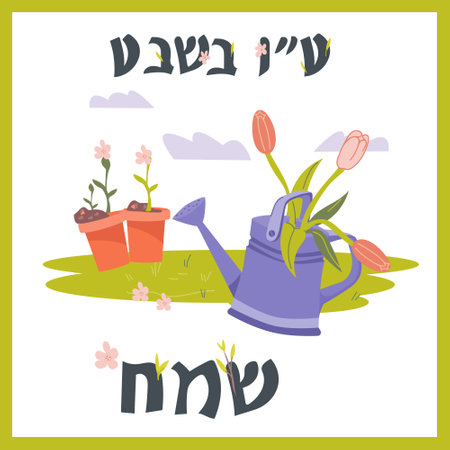Understanding Night Pollinators: Beyond the Bees
When most folks in the U.S. think about pollination, they picture honeybees buzzing around under the midday sun. But once dusk settles over your backyard or local community garden, a different set of hard-working pollinators comes alive. Moths, bats, and beetles may not get the spotlight like bees and butterflies do, but they play an essential role in keeping our gardens—and food systems—thriving. These nighttime pollinators are uniquely adapted to work after dark. For example, moths are attracted to pale or white flowers that release strong fragrances at night, while bats often seek out plants with large, open blossoms full of nectar. Beetles tend to visit sturdy flowers with lots of pollen, sometimes even before sunrise or just after sunset. Unlike their daytime counterparts who rely heavily on bright colors and warm sunshine, night pollinators follow scent trails and navigate in low light. By understanding these differences, you can better appreciate the diversity of pollinators supporting your sustainable garden—even when you’re inside winding down for the evening.
2. Why Night Pollinators Matter for Your Garden and Local Ecosystems
When we think about pollinators, honey bees and butterflies usually come to mind, but night pollinators like moths, bats, and certain beetles play a crucial—yet often overlooked—role in American gardens and natural landscapes. These nighttime visitors help ensure the health of your vegetable beds, fruit trees, and native wildflowers long after the sun goes down. Their contributions go well beyond just supporting your harvest—they help maintain biodiversity and keep local ecosystems resilient.
The Impact on Food Production
Many staple crops and garden favorites rely on night pollinators for successful fruit set. For example, some varieties of squash, melons, and tomatoes are visited by moths when its too cool or dark for bees to be active. In regions where bats are present, they can help pollinate agave and even contribute to pest control by eating insects that might otherwise damage crops. Heres a quick look at how different night pollinators support food production:
| Night Pollinator | Crops Benefited | Additional Benefits |
|---|---|---|
| Moths | Tomatoes, Squash, Evening Primrose | Pollinate flowers closed during the day |
| Bats | Agave, Guava, Banana (regional) | Eat crop-damaging insects |
| Nocturnal Beetles | Tropical Fruits, Magnolias (ornamental) | Aid in decomposition and soil health |
Biodiversity Boosters in American Gardens
By attracting night pollinators, you’re supporting a wider range of plant species—not just the ones we eat. Native wildflowers like evening primrose or yucca depend on nighttime visitors to reproduce. This diversity of plants provides habitat and food for other beneficial insects and wildlife throughout the year. The more diverse your garden’s ecosystem is, the better it can withstand drought, disease, or pest outbreaks—a cornerstone principle in sustainable gardening.
Ecosystem Health: Beyond the Garden Fence
The benefits of night pollinators ripple out from your backyard into surrounding forests, prairies, and urban green spaces. These creatures help maintain healthy seed cycles for native plants that stabilize soil, reduce erosion, filter water runoff, and provide shelter for birds and mammals. By supporting them in your sustainable garden, you’re not only improving your own harvest but also contributing to healthier local landscapes for everyone.

3. Common Night Pollinators in the United States
After the sun sets, a unique crew of pollinators takes over American gardens, quietly supporting your crops and native plants. Among the most fascinating night pollinators are hawk moths, yucca moths, and several species of native bats. Learning to recognize their activity can help you cultivate a truly sustainable garden.
Hawk Moths: The Hummingbirds of the Night
Hawk moths (Sphingidae family) are often mistaken for small hummingbirds because they hover and dart from flower to flower with remarkable speed. Their long proboscis allows them to reach deep into tubular blossoms like evening primrose or moonflower. If you spot a thick-bodied, fast-flying insect hovering at dusk, that’s likely a hawk moth at work.
Yucca Moths: Mutualism in Action
The relationship between yucca plants and yucca moths is a classic example of nature’s teamwork. Yucca moths pollinate only yucca flowers, deliberately transferring pollen while laying eggs inside the blossom. Look for these slender white moths around blooming yuccas; their larvae even depend on yucca seeds to survive.
Bats: Unsung Heroes of Pollination
While many people associate bats with pest control, some native species—like the lesser long-nosed bat—are important pollinators in the Southwest. They feed on nectar from night-blooming cacti and agave plants, spreading pollen as they go. Signs of bat activity include fluttering silhouettes at dusk and chewed fruit near pollinated plants.
How to Recognize Night Pollinator Activity
You might notice fluttering shadows around fragrant night-blooming flowers or hear the gentle hum of wings after dark. Check for subtle signs like pollen dusting on petals in the morning or new fruit forming on plants that bloom at night. By learning to spot these nocturnal visitors, you’ll better understand—and support—the vital role they play in your sustainable garden.
4. Designing a Night Pollinator-Friendly Garden
If you want your sustainable garden to welcome and support night pollinators like moths, beetles, and bats, it’s important to think beyond the usual daytime blooms. Creating a habitat that attracts these nighttime helpers involves choosing the right plants, arranging your landscape thoughtfully, and minimizing environmental impact. Here’s how you can get started:
Choose Native Plants and Night-Blooming Flowers
Native plants are adapted to your local environment and provide essential nectar and pollen sources for native night pollinators. Look for species that bloom at dusk or after dark—these often have pale or white flowers that are more visible under moonlight and release strong fragrances in the evening.
| Plant Type | Recommended Species (U.S. Regions) | Bloom Time |
|---|---|---|
| Night-blooming flowers | Datura (Jimsonweed), Evening Primrose, Four O’Clocks, Moonflower | Dusk/Night |
| Fragrant natives | Yucca (Southwest), Garden Phlox (Midwest/East), Mock Orange (Pacific Northwest) | Evening |
| Pale-flowered perennials | White Coneflower, Shasta Daisy, White Yarrow | Dusk/Night |
Create Pollinator-Friendly Landscape Features
- Add Water Sources: Small birdbaths or shallow dishes with stones offer safe drinking spots for moths and beetles.
- Provide Shelter: Dense shrubs, hedgerows, and brush piles give pollinators places to rest during the day and hide from predators at night.
- Minimize Artificial Light: Limit outdoor lighting or use motion-activated lights to avoid disrupting the natural behaviors of nocturnal pollinators.
Sustainable Maintenance Tips
- Avoid pesticides—especially at dusk and night—to keep pollinators safe.
- Mulch with organic matter to support healthy soil life and attract more insects for bats to feed on.
Sample Garden Layout for Night Pollinators
| Zone | Plants/Features |
|---|---|
| Garden edges | Natives like yarrow, mock orange, hedgerows for shelter |
| Main beds | Moonflowers, evening primrose, white coneflowers planted in clusters |
| Water area | Basin with stones for easy access; surrounded by low-growing herbs |
A well-designed night pollinator garden not only helps your ecosystem thrive but also adds unique beauty and fragrance to your evenings outdoors. By focusing on native plants, thoughtful layout, and eco-friendly practices, you’re making a positive impact for wildlife right in your own backyard.
5. Mitigating Threats to Night Pollinators
Night pollinators such as moths, beetles, and bats are essential to a healthy, sustainable garden. However, these nocturnal helpers face several significant threats that can dramatically reduce their numbers and effectiveness. Let’s look at the main challenges—light pollution, pesticides, and habitat loss—and explore practical ways you can help protect night pollinators right in your own backyard.
Light Pollution: How to Keep It in Check
Artificial lighting from street lamps, porch lights, and even decorative garden lighting can disrupt the natural behaviors of night pollinators. Too much light can disorient them, making it harder for them to find flowers or mates.
Actionable Tips:
- Use motion-activated or timer-controlled lights in your yard.
- Opt for warm-colored LED bulbs that are less attractive to insects.
- Install shields on outdoor lights to direct illumination downward instead of out into the garden.
Pesticides: Reduce Reliance for a Healthier Garden
Chemical pesticides and herbicides don’t just target pests—they also harm beneficial insects like night pollinators. Even organic-approved sprays can have unintended consequences.
Actionable Tips:
- Embrace integrated pest management (IPM) strategies—use physical barriers, hand-picking pests, or introducing beneficial predators instead of chemicals.
- If you must use sprays, apply them at dawn when night pollinators are least active.
- Read labels carefully and avoid products that are toxic to bees, moths, or bats.
Habitat Loss: Create a Welcoming Environment
The loss of natural spaces due to development or tidy gardening practices leaves night pollinators with fewer places to live and feed.
Actionable Tips:
- Plant native flowering species that bloom at dusk or night—these provide food for nocturnal visitors.
- Leave some leaf litter or brush piles undisturbed as safe hiding spots.
- Avoid over-manicuring; let parts of your garden grow a little wild to mimic natural habitats.
Together We Can Make a Difference
By taking steps to reduce light pollution, minimize pesticide use, and create diverse habitats, gardeners play a vital role in supporting America’s night pollinator populations. Every small action adds up—so consider these changes not just as chores, but as investments in a thriving ecosystem that benefits your garden and beyond.
Nighttime Observations: How to Watch and Learn from Your Pollinators
If you want to truly understand the impact of night pollinators in your sustainable garden, there’s nothing like seeing them in action. Nighttime observation is a rewarding way to deepen your connection with the natural rhythms of your landscape and learn how to better support these unsung heroes.
Respectful Nighttime Observation
When heading out after dark, remember that your garden is a habitat. Move quietly and avoid disturbing plants or wildlife. Use a red-filtered flashlight or headlamp—red light is less disruptive to most nocturnal insects compared to white light. Keep your visits brief and minimize any physical contact with flowers or creatures.
Tips for Safe and Effective Monitoring
- Plan Ahead: Scout your paths by daylight so you know where you’re going at night. Wear sturdy shoes and long sleeves to protect against prickly plants or insects.
- Bring a Buddy: If possible, observe with a friend for added safety and more eyes on the action.
- Stay Aware: Watch for uneven ground, garden tools, or wildlife like raccoons or opossums that are active at night in many U.S. regions.
What to Look For
Night pollinators are subtle but fascinating. In much of the United States, keep an eye out for:
- Moths: Especially sphinx and hawk moths, which hover at blooms like hummingbirds.
- Nocturnal Bees: Some native bees, such as certain sweat bees, may be active at dusk or dawn.
- Bats: In southern states, small bats may visit agave or cactus blooms in search of nectar.
Signs of Activity
- Pollen-dusted petals or signs of nibbled foliage near blooms
- The hum of wings, especially around fragrant flowers like evening primrose or moonflower
Share Your Discoveries
Keep a simple journal or take photos (without flash) to document what you see. Share your observations with local gardening groups, Master Gardener programs, or citizen science projects—your backyard data can help build awareness about America’s nighttime pollinators.
With patience and care, observing your garden after dark not only reveals hidden pollinator activity but also inspires new ways to nurture your land for future generations.

